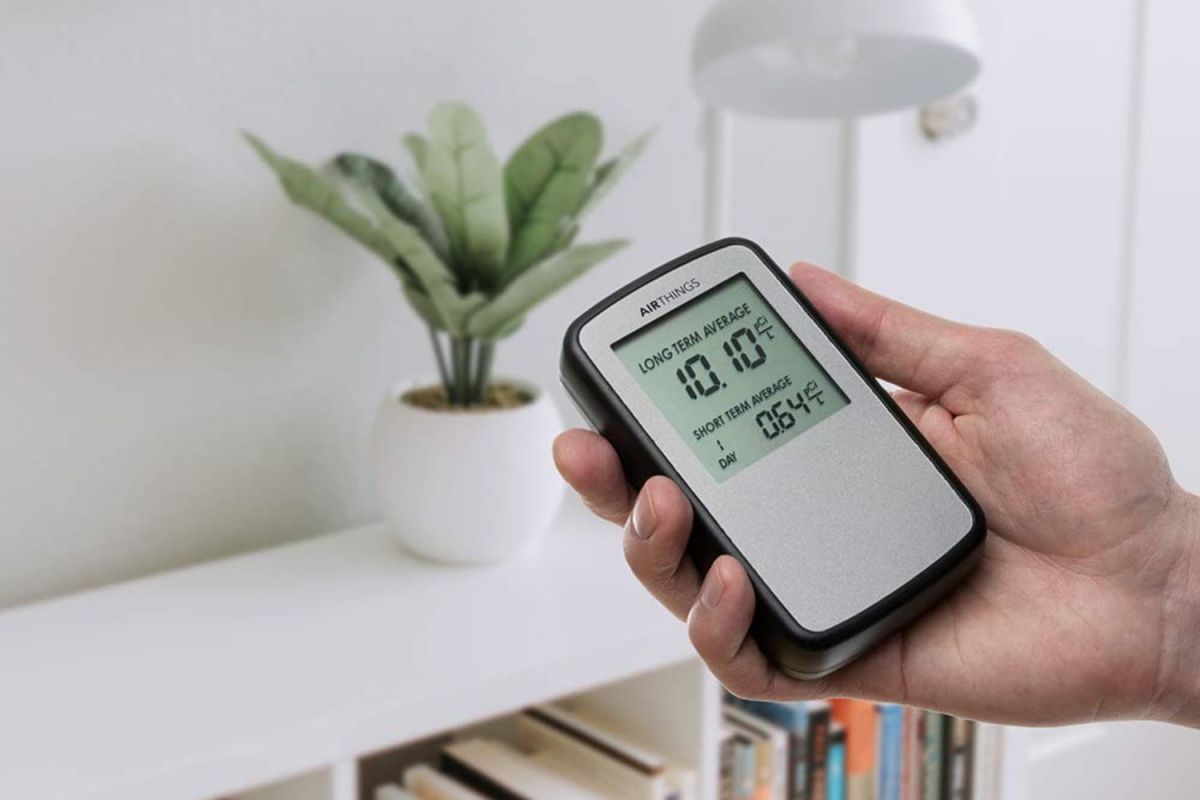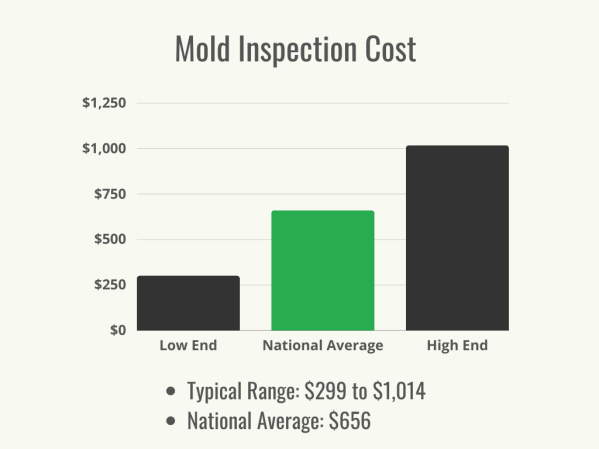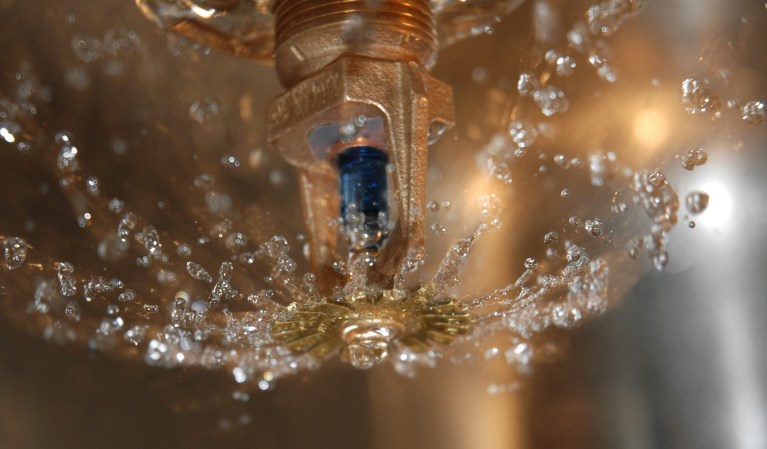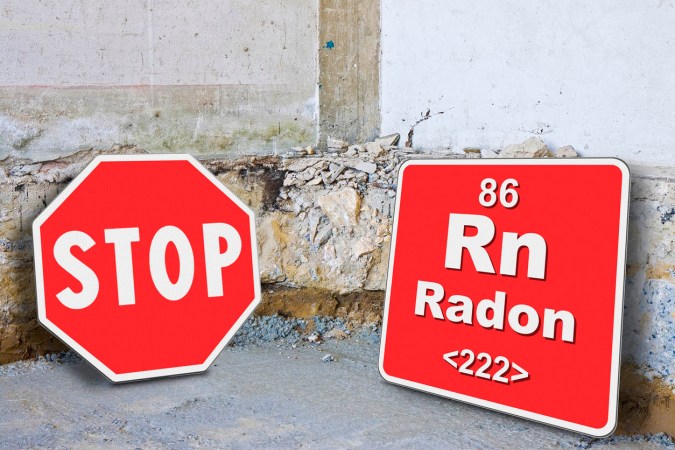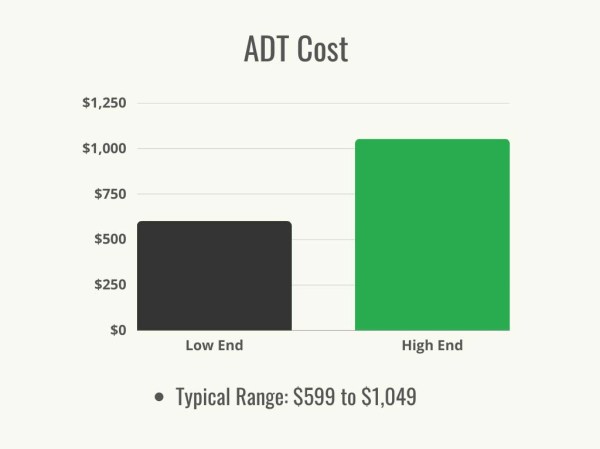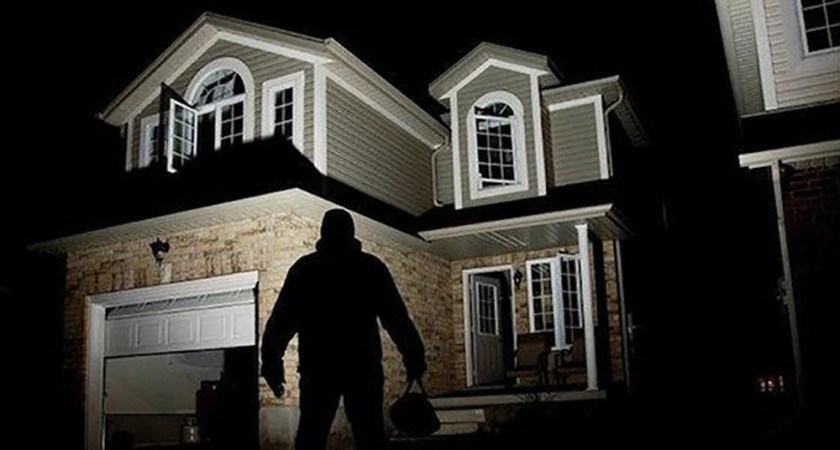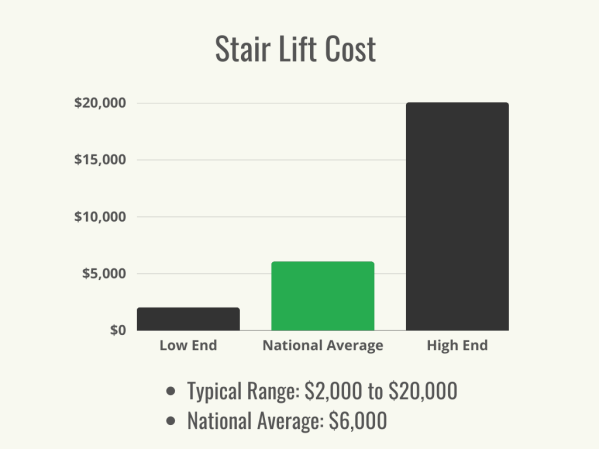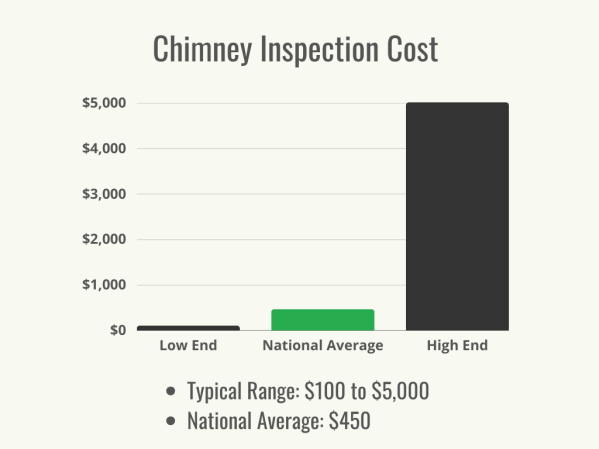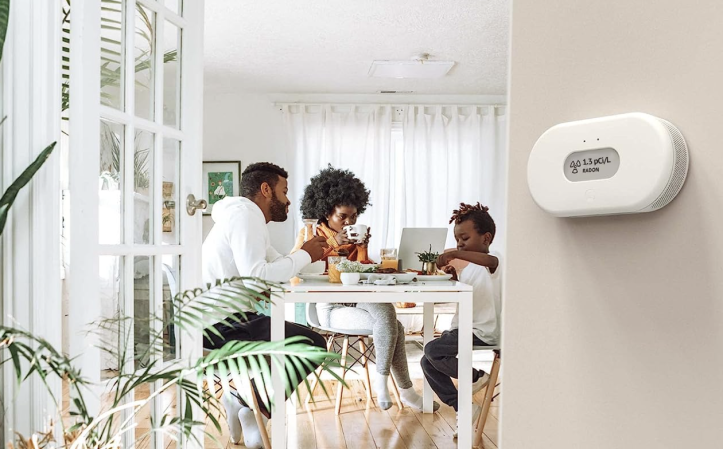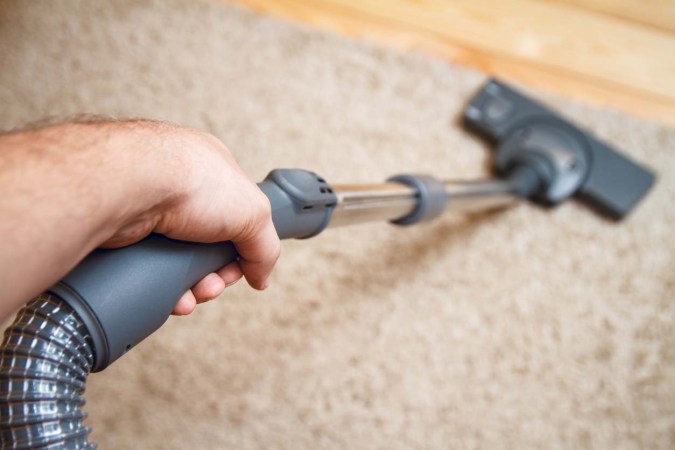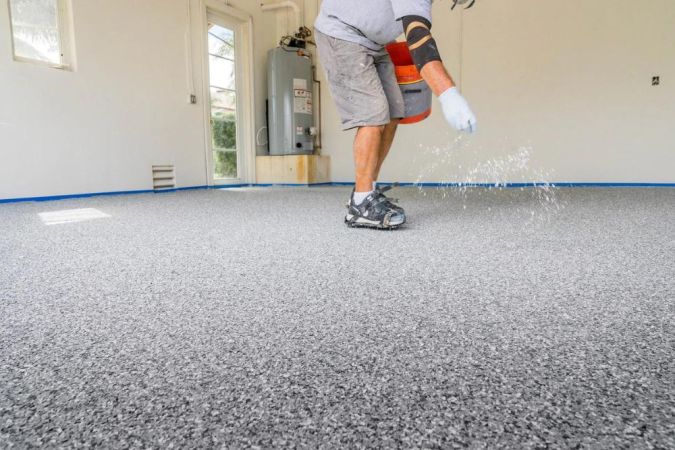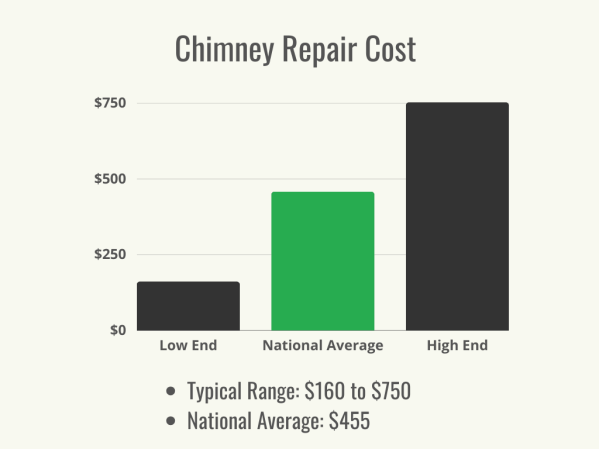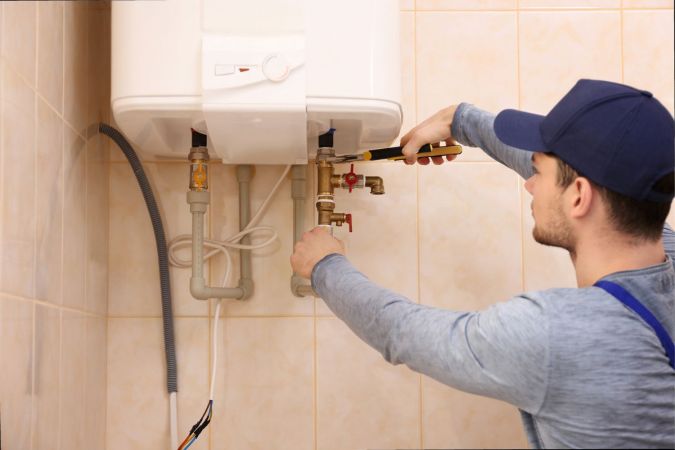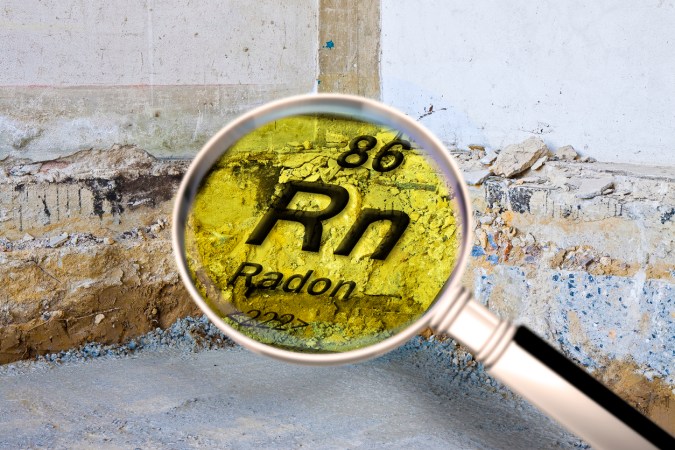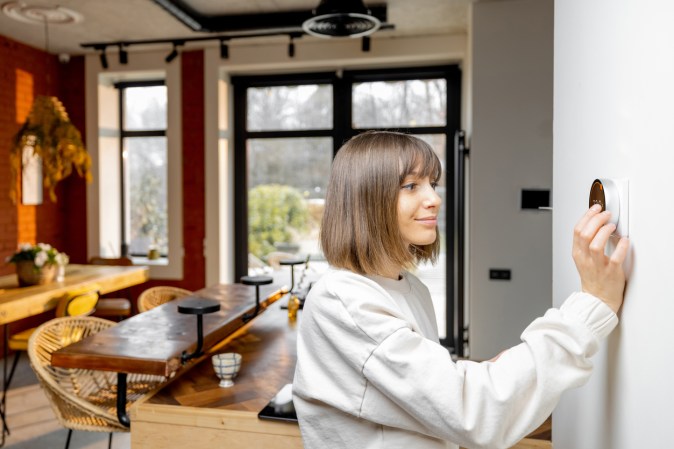We may earn revenue from the products available on this page and participate in affiliate programs. Learn More ›
Highlights
- Most radon inspection costs range from $146 to $716, though a typical average is $420.
- Homeowners anticipating the cost of a radon inspection will need to consider factors such as the home size, region, type of inspection, mitigation systems, and more.
- Radon inspections are important for homeowners to ensure the health and safety of the home’s occupants, especially in regions with higher-than-average radon levels, which can cause radon poisoning and even cancer.
- DIY test kits are available, but they are not reliable enough for homeowners to adequately determine an effective mitigation method, which is why it’s important to have a professional inspection conducted.
Radon, a colorless, odorless gas, is a naturally occurring radioactive element that can seep into homes from contaminated ground. With health risks such as lung cancer associated with radon exposure, radon testing has become an important part of home safety inspections. How much does a radon inspection cost? According to HomeAdvisor, a radon inspection ranges from $146 to $716, with many homeowners spending $420 on average. The overall cost can vary depending on location, property size, and testing method. It’s also worth noting that there can be additional expenses if elevated radon levels are detected, which can result in the need for the installation of radon mitigation systems.
Homeowners can use various approaches to discover the radon levels in their homes, ranging from a home radon test kit to a professional radon detector. While the average cost of a radon inspection may seem expensive to some homeowners, the safety of the home’s occupants may be a top priority, since radon poisoning is a serious concern. Exposure to high levels of radon over a long period can have detrimental health effects, and taking the necessary steps to ensure safe radon levels in the home is a worthwhile investment.
What is radon?
The answer to “ What is radon gas?” is that it’s a radioactive gas that is naturally released from some areas of the ground where uranium may exist. It is odorless, tasteless, and colorless, making it virtually undetectable without proper testing. Originating from the decay of uranium in soil, rocks, and water, radon can infiltrate homes through cracks in the foundation, gaps in the walls, or through water sources, accumulating in enclosed spaces such as basements and lower levels of a home. Prolonged exposure to elevated radon levels has been linked to serious health issues, including an increased risk of lung cancer.
“Radon, often referred to as the silent killer, is a colorless, odorless, and tasteless radioactive gas that naturally occurs in the environment,” explains Insoo Park, CEO and founder of Ecosense, a San Jose, California-based manufacturer of radon monitoring systems. “It emerges as a byproduct of the decay of uranium in soil and rocks, making it ubiquitous in various geographical locations. While the main source of indoor radon gas infiltration is from soil into buildings, radon doesn’t discriminate based on building characteristics—it can be found in any type of building, regardless of its age, insulation, or foundation type, unlike other environmental factors.”
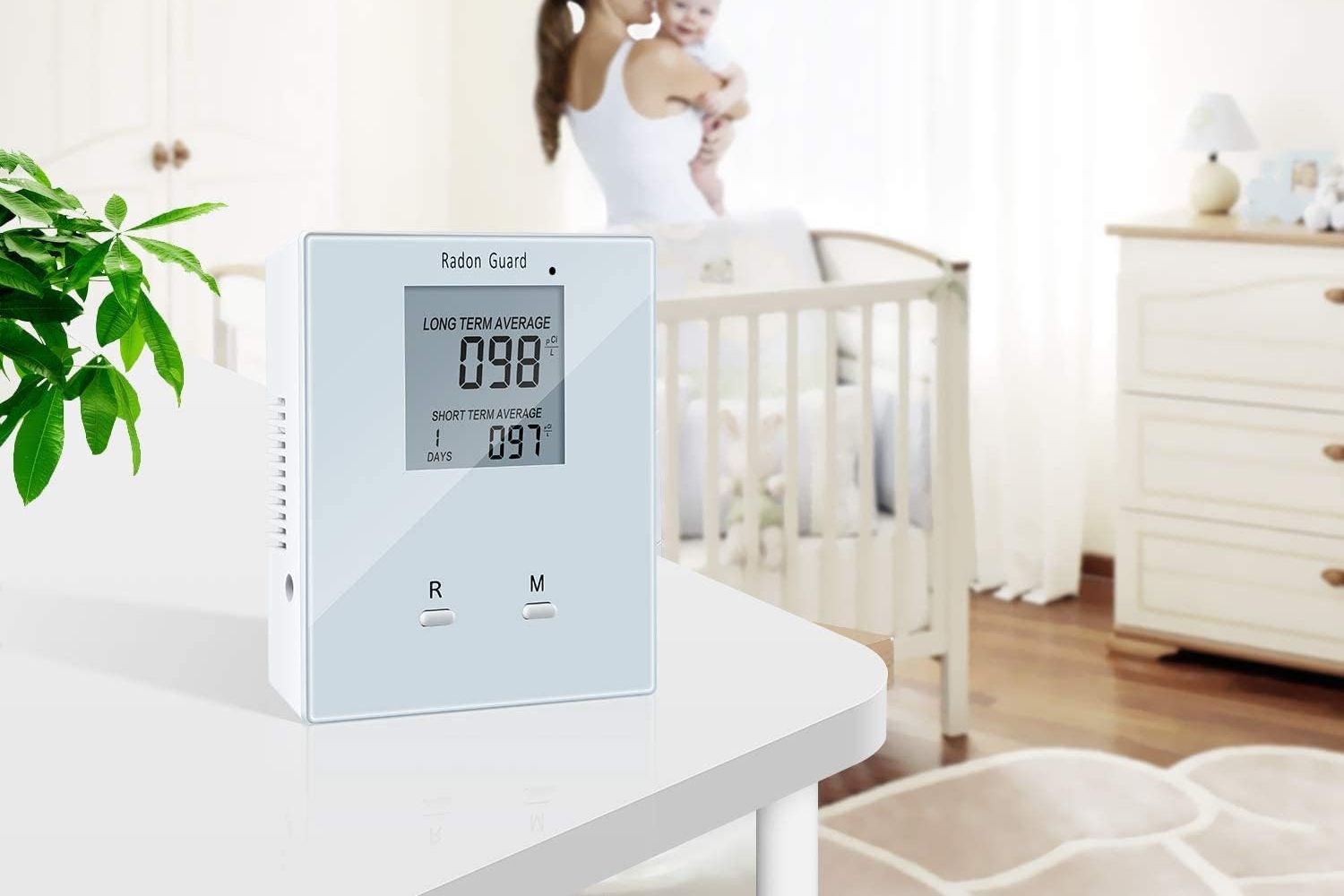
Factors in Calculating Radon Inspection Cost
The cost of a radon inspection is influenced by home size, test type, region, travel fees, radon mitigation system installation, and any bundling of the radon inspection with a home inspection. The national average price of $420 is a good starting point, but local costs can vary due to the following factors.
Home Size
Larger homes usually require more than one of the best radon test kits and longer testing durations, which contribute to an increase in the overall cost. Radon testing is often conducted on a per-square-foot basis. Larger homes may also have more complex layouts, which can affect the testing process and timing. When estimating radon inspection costs, homeowners will want to consider the square footage of their home since this directly correlates with the number of testing materials and time needed for an accurate reading. Using multiple kits can increase the final price by $30 to $300, depending on the house and the radon inspector.
Test Type
The type of radon test used affects the overall price of the inspection. Various testing methods, including in-water tests, long-term or short-term tests, offer varying levels of accuracy and duration. The differences affect not only the inspection cost but also the amount of time the testing takes. Each type of test can cost between $10 and $350, but professional inspection and testing can go as high as $716.
Region
Radon inspection costs can vary based on regional factors, including current testing demands, local regulations, and the prevalence of radon in the soil. Areas that are prone to elevated radon levels may experience a greater demand for radon testing services, which leads to higher prices.
Some regions may have specific regulations or requirements related to radon testing and mitigation, and compliance with these regulations may add to the overall inspection cost. Regions with higher concentrations of radon in the soil may require more frequent testing or more careful mitigation efforts, which can also influence what a homeowner will pay.
Travel Fees
The farther a radon inspector needs to travel to reach a property, the higher the potential travel fees. Longer distances may require more time and resources, which may be accounted for in the final cost. If the property is in a remote or difficult-to-reach location, an inspector may charge more to compensate for the additional effort.
In areas where certified radon professionals are scarce, homeowners may need to hire an inspector from a neighboring area, which means a trip fee is a likely bet. Some inspection companies can charge an additional $0.50 to $0.60 per mile.
Radon Mitigation System Installation
“If a home is found to have high radon levels, the next step is to implement mitigation measures,” explains Park. “This may involve installing radon ventilation systems or sealing foundation cracks to prevent radon entry. Hiring a qualified radon mitigation professional is crucial to determine the most effective solution tailored to the specific circumstances of the home.”
Not all homes require the same type of radon mitigation system. The radon levels, the construction of the house, and the local regulations can all influence the mitigation method. The type of system installed can also impact the overall cost of a radon mitigation system.
| Type of Mitigation System | Average Cost (Materials and Labor) |
| Active suction | $500 to $2,500 |
| Basement sealing | $3,000 to $5,000 |
| Depressurization (passive) | $500 to $2,500 |
| Lower-level pressurization | $500 to $1,000 |
| Ventilation (fan-assisted) | $800 to $2,500 |
| Water treatment | $2,500 to $4,000 |
- Active suction. The active suction radon mitigation system, commonly known as a radon vent pipe or radon fan system, is a method that uses a fan to create a vacuum effect beneath the foundation of a home to prevent radon gas from entering. The system creates a suction point beneath the foundation and connects to a pipe that extends up through the roof, allowing the radon gas to be safely vented outside. Active suction mitigation may be used when other methods cannot lower the amount of radon in the home. This mitigation method can cost from $500 to $2,500.
- Basement sealing. In some instances, sealing cracks and gaps in the foundation can help to reduce radon levels in a home. The cost of radon inspection may increase when basement sealing is required since it involves additional labor and materials to identify potential entry points and perform the necessary sealing work. This method is not fully effective on its own, and it’s typically used with other radon mitigation methods. Basement sealing for radon mitigation ranges in cost from $3,000 to $5,000.
- Depressurization (passive). A common method, depressurization is used to reduce radon levels by adding a pipe to the slab or basement for ventilation. Passive systems don’t require a fan like active suction systems do, but they do rely on natural pressure to work effectively. The overall cost of $500 to $2,500 is lower than the cost of other methods since it doesn’t involve the installation of mechanical equipment.
- Lower-level pressurization. Lower-level pressurization uses a powerful fan in a basement or crawlspace to increase the pressure of a home’s lower levels so that the radon gas is forced out. This method is an excellent option for newer, airtight homes with basements, but it’s not suitable for homes with slab foundations or with a lot of air leaks. This method runs from $500 to $1,000 to install, and it doesn’t involve extensive modifications to the structure of a home.
- Ventilation (fan-assisted). Ventilation systems use fans to push air out of the home and draw fresh air in, diluting the concentration of radon inside the house. This method is effective in houses with moderate concentrations of radon and works best with some active depressurization methods too. Fan-assisted ventilation cost ranges from $800 to $2,500.
- Water treatment. Radon can also enter homes through the water supply. If this happens, a water treatment system is necessary to remove radon before it’s consumed or released into the air. A common purifying technique is air stripping, in which bubbles are pushed through the water to force the radon up and out of the water and vented outside. It’s important to note that these water treatment tanks will take up a considerable amount of space in a basement. Radon water mitigation can cost from $2,500 to $4,000.
Home Inspection Bundle
It’s common for many home inspectors to bundle the cost of a radon test with the overall cost of a standard home inspection. Hiring one of the best home inspection services can increase the cost by $90 to $250 when bundling with the radon inspection. Home inspectors are usually familiar with how to test for radon properly.
Types of Radon Inspections
Radon inspection costs can vary depending on the type of testing method. There are a few types of radon inspections available, each with its own unique process and duration. Knowing how the various types of tests affect the price of a radon inspection can help homeowners budget for this home safety inspection.
| Type of Radon Inspection | Average Cost |
| In-water | $25 to $150 |
| Long-term | $30 to $350 |
| Professional inspection | $146 to $716 |
| Short-term | $10 to $150 |
In-Water
This type of inspection is specific to homes with private wells that need to have the water supply tested for radon levels. An in-water inspection can cost anywhere from $25 to $150, depending on the area and the scope of the test, since it can be done by a pro on-site or with a homeowner’s sample sent away for lab testing.
Long-Term
Long-term inspections are conducted for a duration of 90 days to up to a year. These tests provide a more accurate representation of the radon level in a home over an extended period, which may be important since radon levels can vary depending on external temperatures. There are three types of long-term tests that homeowners can purchase: alpha track, continuous monitor, and electret radon monitor.
- Alpha track radon detector. As one of the most common long-term detectors, the alpha track radon detector is a passive testing device designed to measure the concentration of radon in homes. This type of detector uses a small piece of special plastic or film that is sensitive to the particles emitted by radon decay products. After the exposure period, the detector is sent to a lab for analysis. An alpha track radon detector can cost from $45 to $350.
- Continuous radon monitor. A continuous radon monitor is an electronic device designed to provide real-time, continuous measurements of radon gas levels. Unlike passive devices, which require a specific exposure period before analysis, continuous monitors offer immediate and ongoing data. This method is commonly used in both short-term and long-term testing scenarios. Continuous monitors can detect slight variations in radon levels that other tests may miss. Homeowners can expect to pay between $125 and $300 for a continuous radon monitor.
- Electret radon monitor. An electret radon monitor, or electret ion chamber, is a type of radon detection device that uses a permanently charged material called an electret to measure radon gas in the air. It’s considered a continuous monitoring device and provides ongoing measurements over time. These monitors are known for their accuracy and sensitivity, making them suitable for both short-term and long-term testing. Electret ion chamber monitors cost from $30 to $300.
Professional Inspection
A professional inspection for radon testing brings in the expertise of certified radon professionals to assess and measure radon levels in a home. This type of inspection is typically more comprehensive than DIY methods since it includes a thorough evaluation of potential entry points and considerations for the structure of the home. Trained and certified radon professionals conduct the inspection through a site assessment that identifies potential areas where radon can enter the home, such as cracks in the foundation, gaps around pipes, or other openings.
Understanding the property’s quirks and characteristics helps inspectors tailor the testing approach. After the testing period, the collected data is analyzed to determine the radon levels. The inspector will use that information to determine if radon mitigation measures are necessary. A professional radon inspection can cost from $146 to $716, with a national average cost of $420.
Short-Term
Short-term radon tests are radon detection methods that provide a rapid assessment of radon levels in indoor air over a brief period—usually from a few days to several weeks. These tests are designed to offer a quick snapshot of radon concentrations and are often used by homeowners or professionals to do initial screenings or to assess the need for more detailed testing. Radon professionals also use the alpha track and electret ion chamber devices for short-term testing.
- Charcoal canister radon test. A charcoal canister radon test is a type of short-term radon detection method that uses activated charcoal to absorb and measure radon gas levels. This passive testing device is designed to capture radon over a specific period, typically ranging from 2 to 7 days, providing a quick look at radon concentrations in a home. This cost-effective testing option ranges from $20 to $150.
- Liquid scintillation radon test. This method uses a liquid scintillation solution with activated charcoal to measure radon gas levels passively. The vial collects air samples and transfers them to a liquid scintillation solution that interacts with the radon decay particles. This process generates flashes of light, known as scintillation, and the scintillation intensity is directly related to the amount of radon in the sample. Light-sensitive equipment measures the intensity of scintillation, which shows the concentration results. This type of device costs from $20 to $150.
Do I need a radon inspection?
Radon is a known carcinogen, and prolonged exposure to high levels of radon is dangerous to a home’s occupants. With this in mind, homeowners may wonder if they need a radon inspection for their home. By understanding the risks associated with radon and the potential ways it can get into a home, homeowners can make an informed decision about whether to get an inspection.
Signs of Radon Poisoning
Recognizing the signs of radon poisoning helps homeowners identify the need for a radon inspection. However, that isn’t always easy. “Early signs of radon poisoning are challenging to detect as radon is odorless and tasteless,” warns Park. “Symptoms typically do not manifest until the later stages of exposure. Prolonged radon exposure is associated with an increased risk of lung cancer, and symptoms may include persistent coughing, difficulty breathing, chest pain, and frequent respiratory infections.”
Frequent respiratory infections or a worsening of symptoms may also indicate the presence of elevated radon levels. “This underscores the importance of increasing radon awareness and letting people test and know they are safe before they get bad news,” says Park. “Remember, radon risks are totally preventable with early radon detection and continuous radon monitoring.”
Geographic Location
Geographic location can be a key indicator that a radon inspection is needed, especially if a home is in an area known for elevated radon levels. According to Park, “[The] decision to undergo radon testing may be influenced by the geographical location of the home. Residents in areas known for high radon levels are often encouraged by state or town authorities to be vigilant about radon awareness and consider radon testing as a precautionary measure.”
Certain geological characteristics, such as the presence of uranium-rich soil or specific rock formations, contribute to higher radon concentrations. The Environmental Protection Agency (EPA) provides radon zone maps, showing regions with an increased likelihood of elevated radon levels. With information on how to protect a family when buying a newly built home, the EPA outlines why buying a radon-resistant home and using radon-resistant construction techniques are worth it.
Radon has been found across the United States. While there are no federal or state laws that require radon testing, some areas have higher levels of radon and more local ordinances for radon detection and mitigation. It’s recommended that homeowners regularly test their home if they live in a state that has levels of 2 picocuries per liter (pCi/L) or higher.
A picocurie is the unit of measurement that indicates the concentration of radon gas in the air. One picocurie (pCi/L) is a unit of radioactivity equal to one trillionth of a curie. The EPA has established action levels for radon exposure. If the concentration in a home exceeds 4 pCi/L, homeowners are advised to take steps to mitigate and reduce the radon levels in the home.
| State | Average Radon Levels in pCi/L |
| Alabama | 3.9 |
| Alaska | 10.7 |
| Arizona | 1.9 |
| Arkansas | 2.5 |
| California | 2.3 |
| Colorado | 6.8 |
| Connecticut | 3.4 |
| Delaware | 2.4 |
| Florida | 1.8 |
| Georgia | 2.3 |
| Hawaii | <1 |
| Idaho | 7.3 |
| Illinois | 5.3 |
| Indiana | 4.7 |
| Iowa | 6.1 |
| Kansas | 4.9 |
| Kentucky | 7.4 |
| Louisiana | 1.1 |
| Maine | 5.9 |
| Maryland | 5.4 |
| Massachusetts | 3.9 |
| Michigan | 3.5 |
| Minnesota | 4.6 |
| Mississippi | 1.2 |
| Missouri | 4.3 |
| Montana | 7.4 |
| Nebraska | 5.2 |
| Nevada | 3.4 |
| New Hampshire | 5.6 |
| New Jersey | 4.4 |
| New Mexico | 3.9 |
| New York | 4.2 |
| North Carolina | 4 |
| North Dakota | 6 |
| Ohio | 7.8 |
| Oklahoma | 2.5 |
| Oregon | 3.1 |
| Pennsylvania | 8.6 |
| Rhode Island | 4.3 |
| South Carolina | 2.4 |
| South Dakota | 9.6 |
| Tennessee | 4.8 |
| Texas | 2.1 |
| Utah | 4.4 |
| Vermont | 3.7 |
| Virginia | 3.6 |
| Washington | 7.5 |
| West Virginia | 6.1 |
| Wisconsin | 5.7 |
| Wyoming | 5 |
Time Since Last Radon Test
Radon levels can fluctuate over time, and factors such as changes in the home’s structure, weather patterns, or alterations in the surrounding soil can affect radon concentrations. If it’s been over two years since the last radon test, homeowners are encouraged to schedule another one as soon as possible.
Home Renovations
Homeowners in areas with higher-than-average radon levels will want to prioritize a radon inspection when planning home renovations, since the alterations can change the airflow and ventilation patterns within a home. Sealing cracks, modifying the foundation, or adding new rooms can influence radon entry points. Conducting a radon inspection before and after renovations can help homeowners identify any changes in radon levels and take necessary mitigation measures to ensure the safety of the indoor air quality.
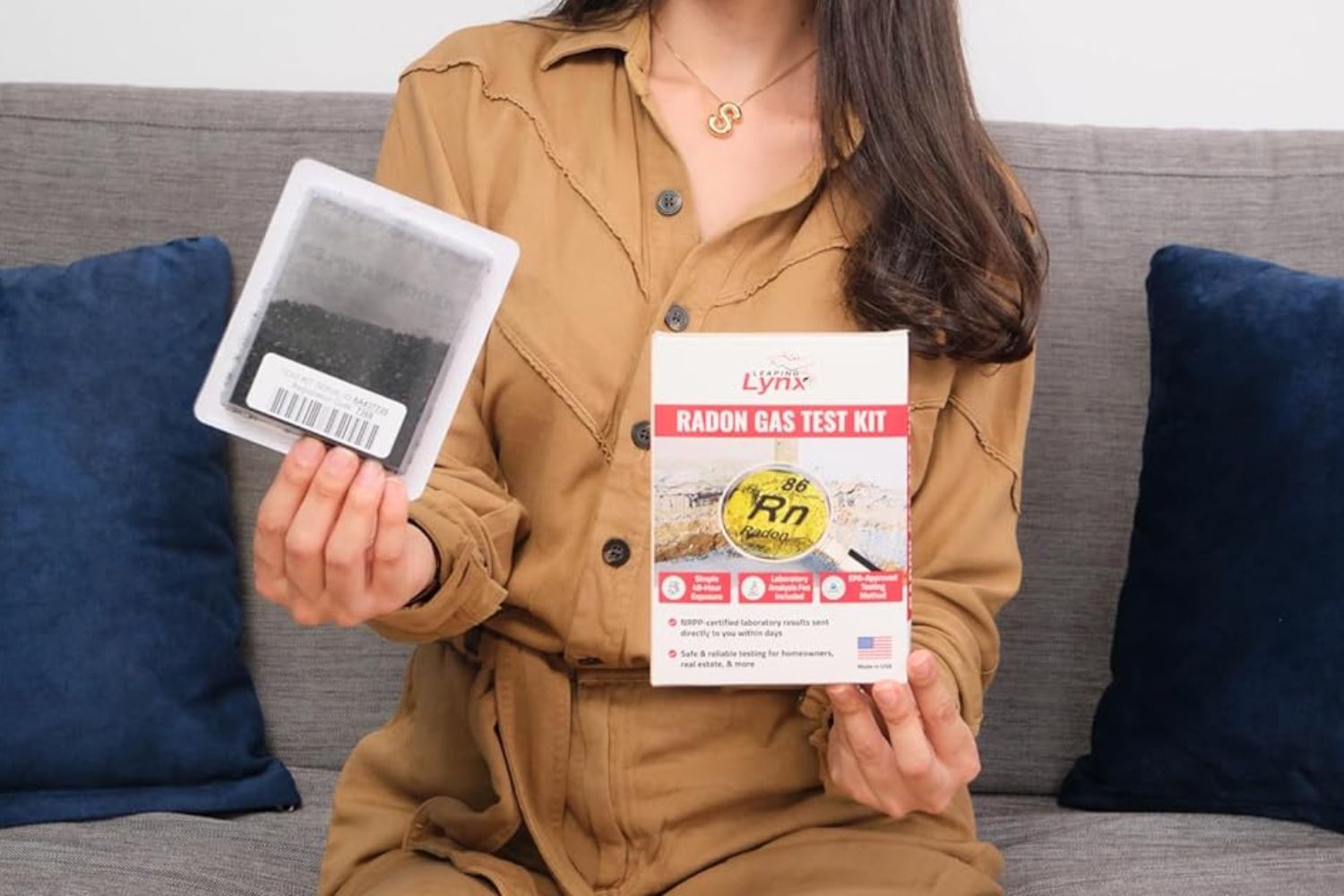
Radon Inspection: DIY vs. Hiring a Professional
While a simple DIY radon testing kit can save homeowners some money, opting for a professional radon inspection is recommended for a few reasons. One reason is that the cheaper radon detection kits are prone to inaccurate readings and may require multiple kits to determine radon levels. On the other hand, certified radon professionals have the knowledge and expertise to conduct accurate radon inspections. They understand the complexities of radon entry, airflow dynamics, and the ways various factors can affect radon levels.
“DIY radon testing kits offer homeowners a convenient option to assess radon levels, typically employing charcoal canisters that are left exposed to radon concentrations for a few days,” explains Park. “After retrieval, these canisters are sent to a lab, and results are typically available in about two weeks. Furthermore, test results using charcoal test kits can only provide one overall average radon reading, regardless of the test period. Most conventional digital monitors also are incapable of real-time tracking of radon fluctuations, and can only provide 24-hour average readings.”
Professional inspectors can identify potential entry points and variations in concentration, while DIY tests may not offer the same level of detail and precision. If elevated radon levels are detected, professionals can offer tailored recommendations for mitigation strategies, whereas a home kit offers no such advice for a homeowner. DIY radon mitigation attempts may lack the effectiveness and attention to detail needed to lower the radon levels in a home.
Professionals also use specialized and calibrated equipment that can offer more accurate and reliable results than DIY test kits. While DIY radon test kits are available for initial screenings, a professional radon inspection is recommended for a more accurate assessment.
“Homeowners are advised to use both methods—starting with their own testing and continuous monitoring, followed by a professional inspection to confirm results with high-grade detectors,” says Park. “Ongoing monitoring is essential, especially after mitigation, as radon levels can change, highlighting the importance of continuous vigilance for a complete understanding of radon exposure.”
How to Save Money on Radon Inspection Cost
The cost of radon inspections can be a concern for many homeowners looking ahead to potential mitigation costs too. By following a few helpful tips, they can save money on radon inspection costs.
- Bundle services. Homeowners can consider combining radon testing with other home inspections for potential discounts.
- Look for discounts. It’s recommended that homeowners take advantage of promotions or discounts offered by radon professionals, especially during awareness campaigns.
- Get multiple estimates. Homeowners will want to get at least three quotes from reputable radon testing companies in their area to find a rate that works with their budget.
- Use community programs. Homeowners can take advantage of discounted or subsidized radon testing services through community programs or local health departments.
- Organize group discounts. Some radon inspection professionals may offer discounts for homeowners who coordinate radon testing with their neighbors.
Questions to Ask About Radon Inspection
Asking a radon inspection professional the right questions is important to get accurate information and understand the inspection process.
- Are you certified, licensed, and insured for radon testing?
- What is your experience with radon inspections and radon mitigation systems?
- Will you provide a list of references?
- What type of testing equipment do you use?
- How long will the radon inspection take?
- How do you identify potential radon entry points during the inspection?
- What mitigation strategies do you recommend?
- Can I see a sample report to get an idea of what information my inspection will include?
- Are there records of previous radon mitigation efforts for my home?
- Do you offer a guarantee or warranty on your inspection?
- What type of post-tests do you provide?
- How can I leave a review of your services?
FAQs
Frequently asked questions about radon inspection costs provide valuable insights for homeowners who want clarity about what happens during the inspection process. These answers can help homeowners make informed decisions about the safety of their homes.
Q. How long does a radon test take?
On average, short-term radon testing can take from 2 to 7 days, while long-term testing can take 90 days to up to 1 year, depending on the radon test used. Continuous radon monitors need at least 30 days for accurate readings, but they can be used for several years. If well-water testing is needed, homeowners will likely need to wait 7 to 10 days for lab results.
Q. Are DIY radon tests accurate?
DIY radon test kits can offer uncertain results since the test is not administered by a professional. A long-term test that measures radon levels over a longer period of time is more accurate than short-term options.
Q. How long before radon is harmful?
According to the Cleveland Clinic, repeated exposure to radon over a period of 20 years can lead to cancer. This risk is increased for those who smoke.
Q. How do you reduce radon in your home?
If a home has high levels of radon, homeowners can take some preliminary steps to increase the airflow in their home by opening windows and using fans to circulate the air and sealing cracks in floors and walls. To safely and adequately lower radon levels, homeowners will want to contact a radon mitigation professional to install a radon reduction system in the home.
Q. What states are worst for radon?
The states with the highest levels of radon include Alaska, South Dakota, Pennsylvania, Ohio, and Washington.
Q. What is the biggest source of radon?
Radon is the decay byproduct of uranium that’s naturally found in the soil. Since uranium is found all over the world, radon is present in almost all soil and rocks.

